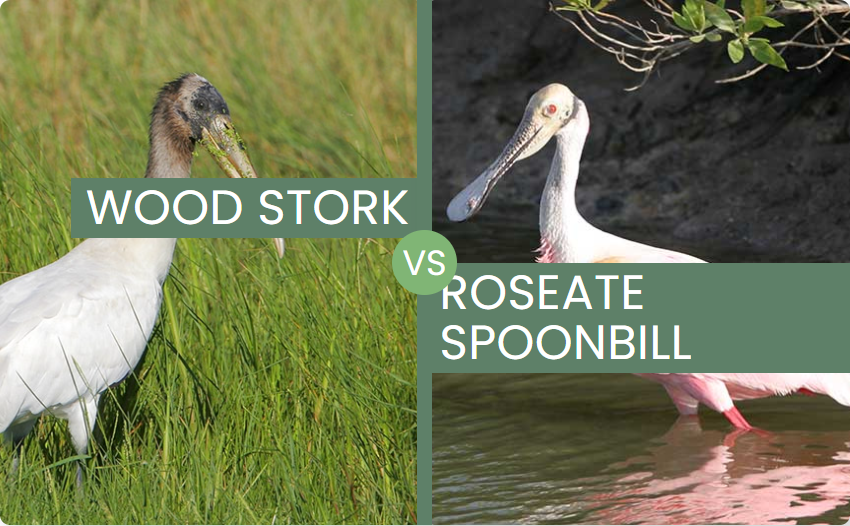These two species are quite different in appearance and are not closely related. Thet fit here because of their general body shape and affinity for being near water and both are large birds.
On this page
Wood Stork
They have a distinctive bald, black head and a long, thick, curved bill that is slightly down-curved. Their body is mostly white with black flight feathers, and they have long legs that are black in color. Adult wood storks have a dark, scaly appearance on their necks and upper bodies, and during the breeding season, they have featherless, pinkish skin on their heads and necks.
Juvenile wood storks have a more uniform, dark brown coloration.
Wood storks are often seen wading in shallow water with their bills submerged, looking for prey. They feed on a variety of aquatic animals, such as fish, frogs, and crustaceans. They are typically found in wetlands, marshes, and other shallow-water habitats, and are known for their ability to fly long distances in search of suitable foraging areas.
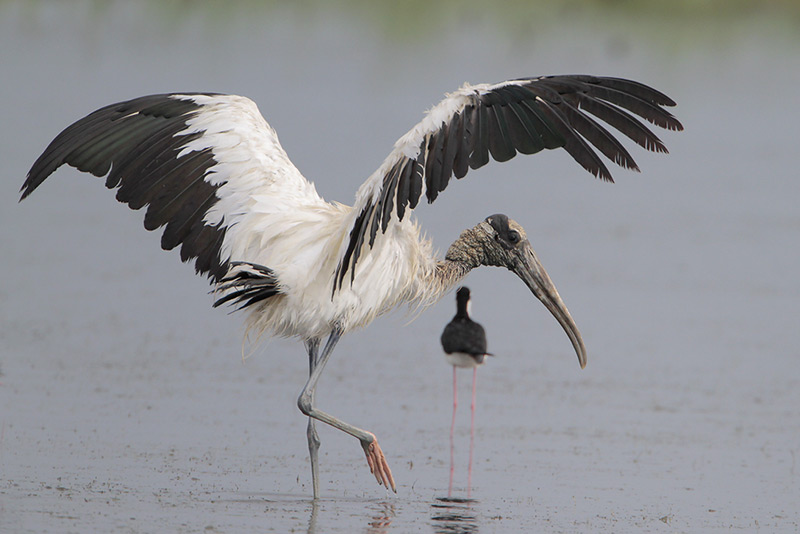
Photograph © Greg Lavaty
Adult Wood Storks have a bare head, crooked bill and gray legs.
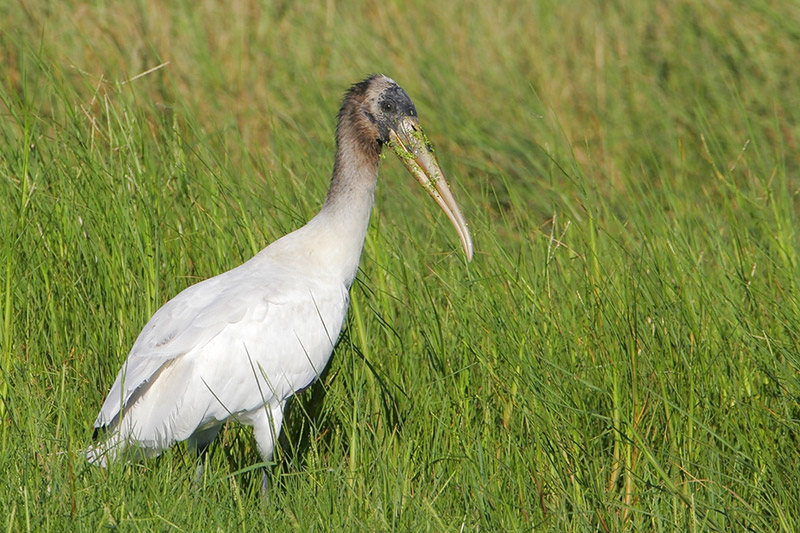
Photograph © Greg Lavaty
Juvenile Wood Storks have some feathers on the head and a light-colored bill.
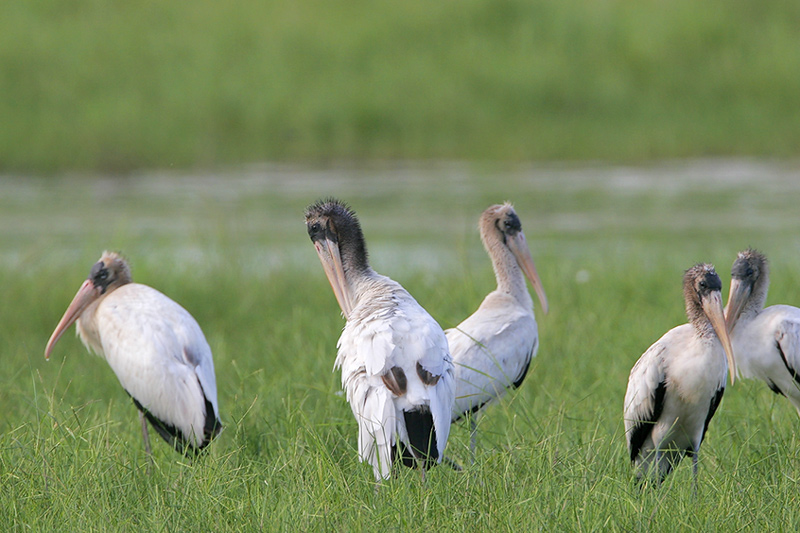
Young Wood Storks. Photograph © Greg Lavaty
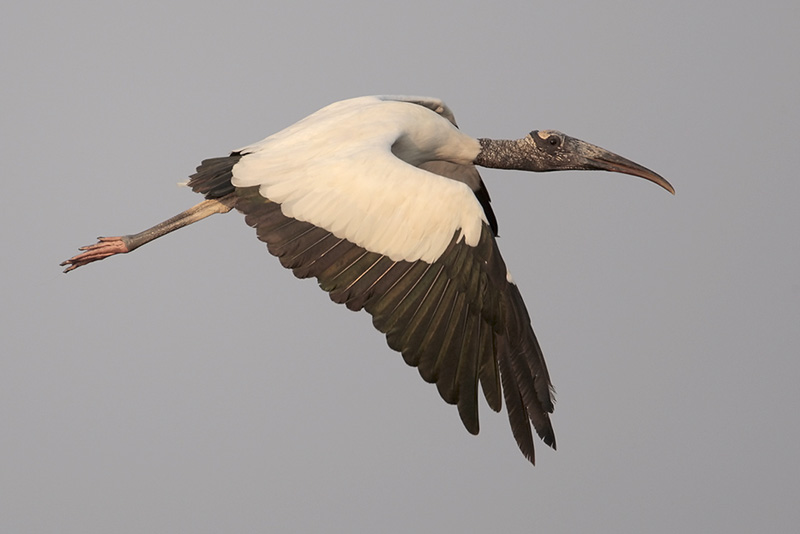
Photograph © Greg Lavaty
The black and white wing pattern is obvious in flight.
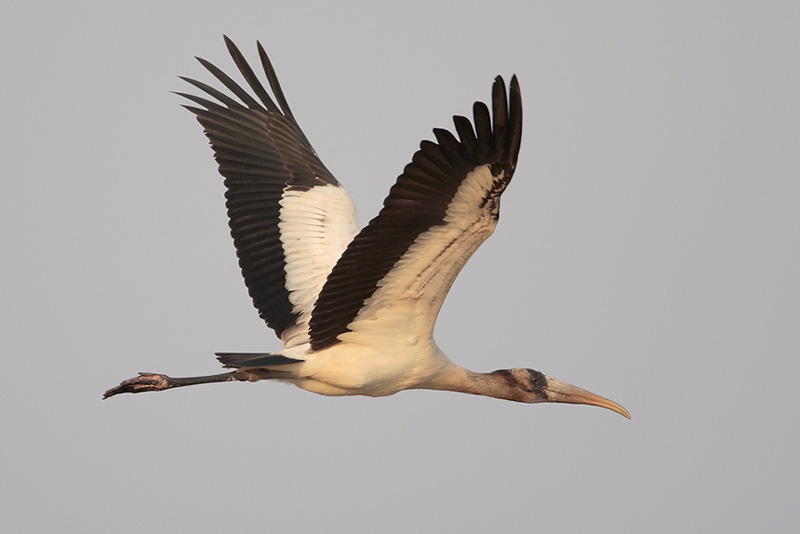
Young Wood Stork.Photograph © Greg Lavaty
Roseate Spoonbill
Roseate Spoonbills are known for their distinctive pink plumage and spoon-shaped bill. Their feathers are a bright pink or rose color, with white underparts and a splash of bright red on their wings. Their bill is long and flattened at the tip, forming a spoon shape that they use to sift through the water to find prey.
They have long, thin legs that are dark color.
Roseate Spoonbills are typically found in wetland habitats, such as mangroves, marshes, and swamps. They feed on small fish, crustaceans, and other aquatic invertebrates, which they locate by sweeping their bill from side to side through the water. Rosete Spoonbills are also known for their distinctive social behavior, which includes groups of spoonbills foraging together in shallow water.
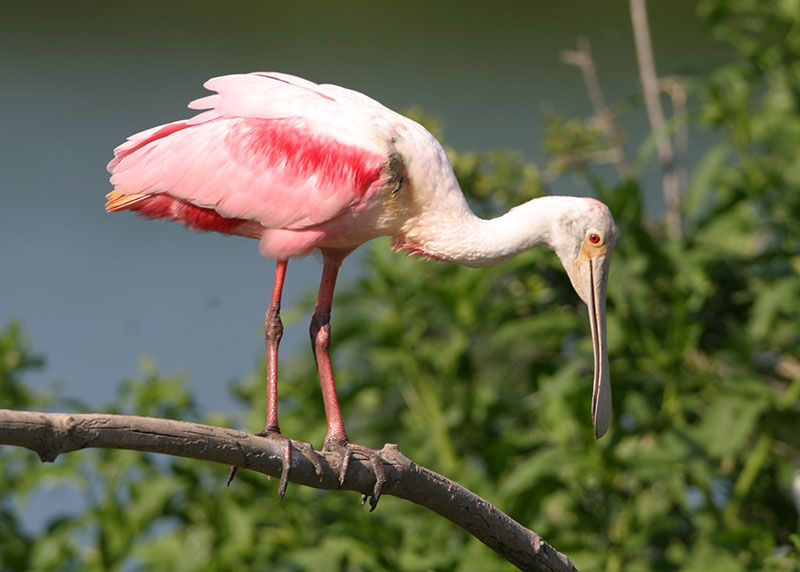
Photograph © Sam Crowe
Spoonbills are aptly named. They swish their bills back and forth to disturb and capture their prey. Head and neck white to pale pink.
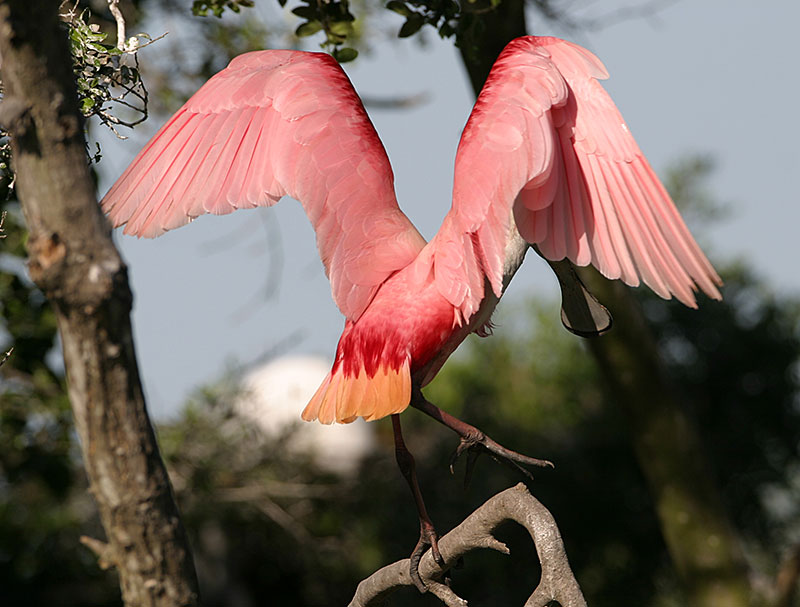
Photograph © Sam Crowe
They are mostly pink, darker on the leading edge of the wings and with an orange tail.
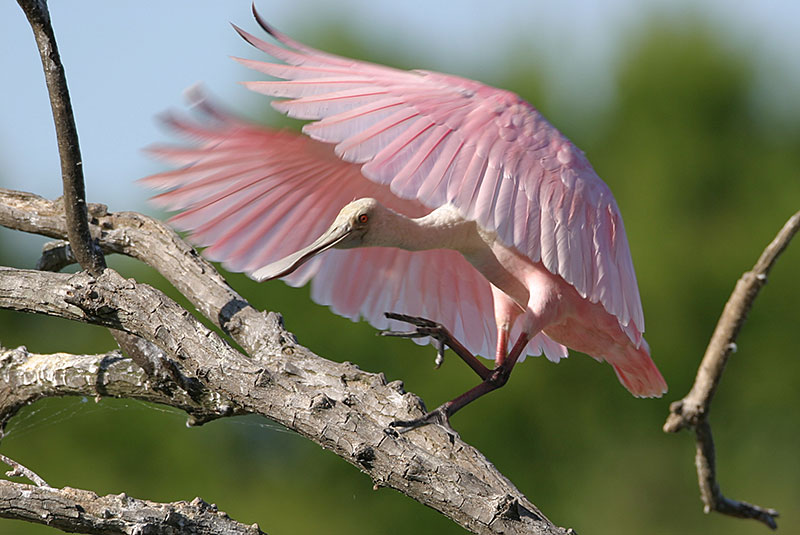
Juveniles are a pale pink. Photograph © Sam Crowe

